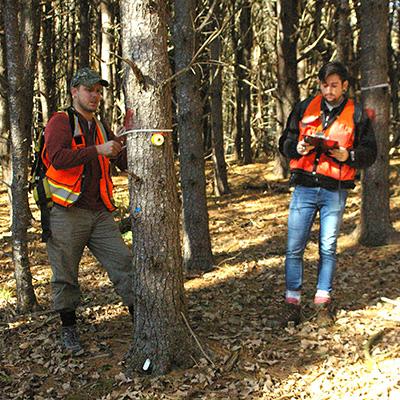Evaluating and Predicting the Regional Effects of Silviculture and Site Factors on Established Regeneration in the Northern Conifer Forest

Natural regeneration remains the dominant method for development of new forest stands in the Northern Forest. This trend is expected to continue in light of the growing prominence of partial timber harvesting. Limited understanding of how partial harvesting practices and site factors influence regeneration species composition and abundance restricts scientists’ and managers’ abilities to evaluate management alternatives and project future wood supply.
NSRC researchers quantified relationships among site, overstory, and understory characteristics; identified key factors and constraints associated with regeneration of desired tree species; and developed predictive models to incorporate into the Acadian Variant of the Forest Vegetation Simulator (FVS). Researchers made stand-level assessments using long-term measurements from plots on the Penobscot Experimental Forest in Maine and landscape-level assessments using USDA Forest Service Forest Inventory and Analysis data.
At the stand-level, tree regeneration abundance was primarily associated with local site factors including overstory composition and soil attributes. Harvesting treatments were less influential in explaining the pattern of natural regeneration abundance and composition at the stand-level. Mean annual temperature and overstory tree diversity were the most important variables to explain abundance and composition of natural regeneration at the landscape-level. Overall results suggest low intensity partial harvesting will not be enough to change the regeneration composition (e.g., balsam fir to red spruce or American beech to sugar maple). Site preparation treatments including soil scarification, controlling browsing pressure, and controlling regeneration of aggressive species (e.g., American beech) are necessary.
